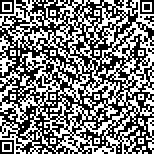杜瑜,毛正欢,王慧,等.中文版Griffiths发育评估量表在2~4岁孤独症谱系障碍儿童中的应用研究[J].中华物理医学与康复杂志,2021,43(9):816-820
扫码阅读全文

|
| 中文版Griffiths发育评估量表在2~4岁孤独症谱系障碍儿童中的应用研究 |
|
| |
| DOI:10.3760/cma.j.issn.0254-1424.2021.09.011 |
| 中文关键词: Griffiths发育评估量表 孤独症谱系障碍 发育性语言障碍 |
| 英文关键词: Griffiths developmental assessment scale Autism spectrum disorder Language development disorders |
| 基金项目:浙江省医药卫生科研项目(2017KY100);浙江省中医药科技计划项目(K17-518055-028) |
|
| 摘要点击次数: 6328 |
| 全文下载次数: 8891 |
| 中文摘要: |
| 目的 采用中文版Griffiths发育评估量表(GDS-C)对2~4岁孤独症谱系障碍(ASD)患儿进行发育情况评估,探讨其发育规律及特点。 方法 采用GDS-C量表分别对2~4岁ASD患儿(共88例)、发育性语言障碍(DLD)患儿(共80例)及正常发育儿童(共82例)进行发育评估,对比分析3组儿童在运动、个人-社会、语言、手眼协调、表现等各个领域的发育水平,并进一步比较ASD组与DLD组在个人-社会领域及语言领域相关条目失分率情况。 结果 ASD组与DLD组患儿在语言领域发育商无明显差异(P>0.05),ASD组患儿在除语言以外其他各领域的发育商均显著低于DLD组及正常组,差异均具有统计学意义(P<0.05)。同时ASD组患儿各领域的发育情况极不均衡,表现为语言领域、个人-社会领域发育商明显低于运动领域、表现领域及手眼协调领域发育商水平。在语言领域,ASD组患儿接受性语言及非语言表达这两个结构模式的相关条目失分率均显著高于DLD组(P<0.05);在个人-社会领域,ASD组患儿社会技巧(包括交际技巧、做家务技巧)、自我技巧(如自我照顾)及听指令结构模式中的相关条目失分率均显著高于DLD组(P<0.05)。 结论 GDS-C量表能有效评估2~4岁ASD患儿发育水平及规律,尤其是语言、个人-社会领域的发育特点,为早期诊断及治疗ASD患儿提供参考资料。 |
| 英文摘要: |
| Objective To evaluate the development of children 2-4 years old with autism spectrum disorders (ASDs) using the Chinese version of the Griffiths Development Scales (GDS-C). Methods Eighty-eight children with ASD, 80 children with developmental language disorder (DLD) and 82 healthy children aged 2-4 were evaluated using the GDS-C. They were compared and their development in sports, personal and social relationships, language, hand-eye coordination and other performance were analyzed. The personal-social and language results of the ASD and DLD children were compared. Results No significant differences were found between the ASD and DLD children in their language development. The development quotient of the ASD children was significantly lower, on average, than those of the DLD and healthy children in all fields except language. However, the ASD children′s development was not balanced. Their average developmental quotients in the language and the personal-social fields were significantly lower than in the sports, performance and hand-eye coordination fields. In the field of language, the entry loss rates of the two structural modes of receptive language and non-verbal expression of the ASD children were significantly higher than the DLD children′s averages. In the personal-social field the entry loss rates of communication and housework skills and of self-care skill were significantly higher than the DLD children′s averages. The command structure model of the ASD children was also superior, on average. Conclusions The GDS-C can effectively assess the development of ASD children aged 2-4, especially in terms of language and personal and social skills. It can provide clinical evidence useful for early diagnosis and intervention for children with ASD. |
|
查看全文
查看/发表评论 下载PDF阅读器 |
| 关闭 |